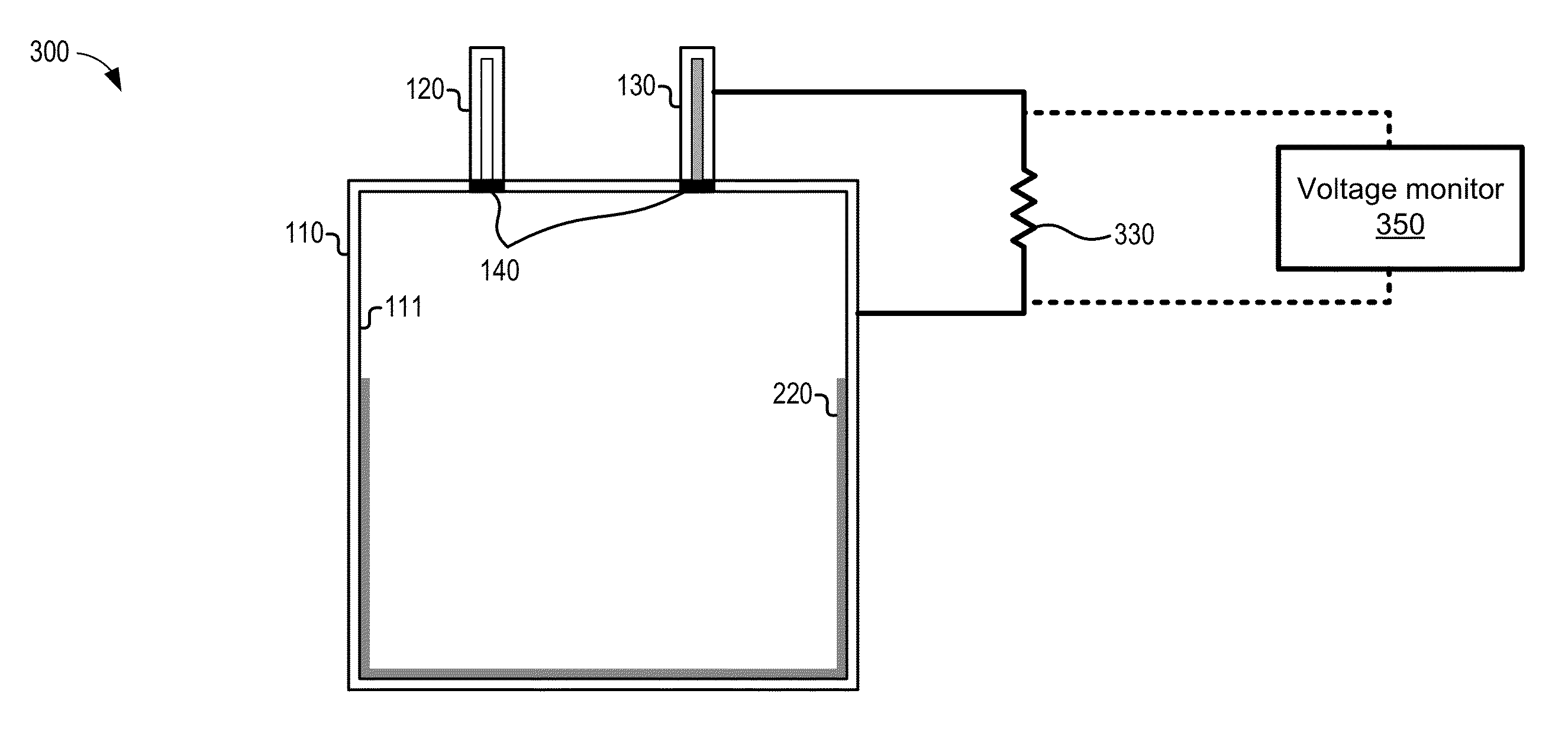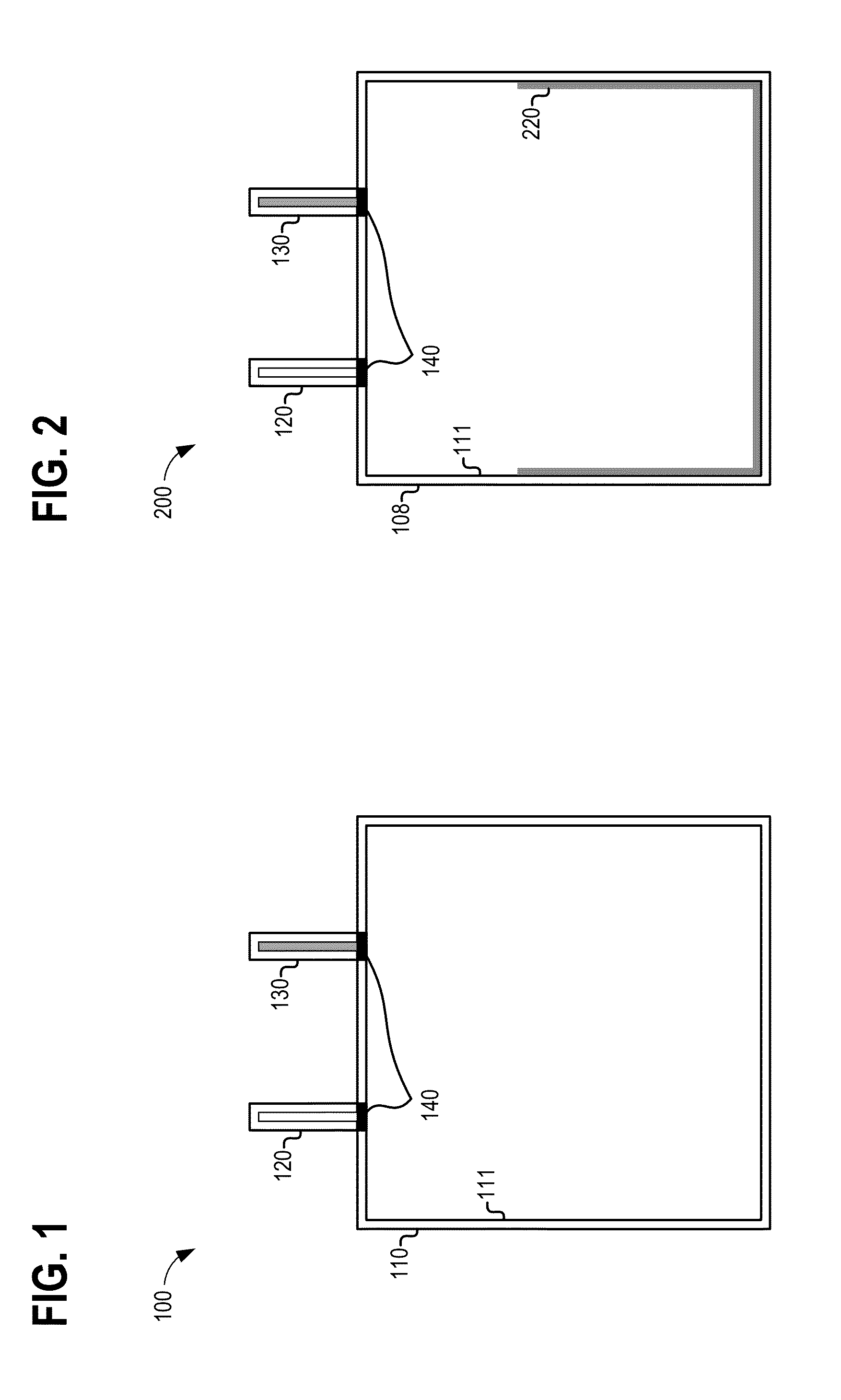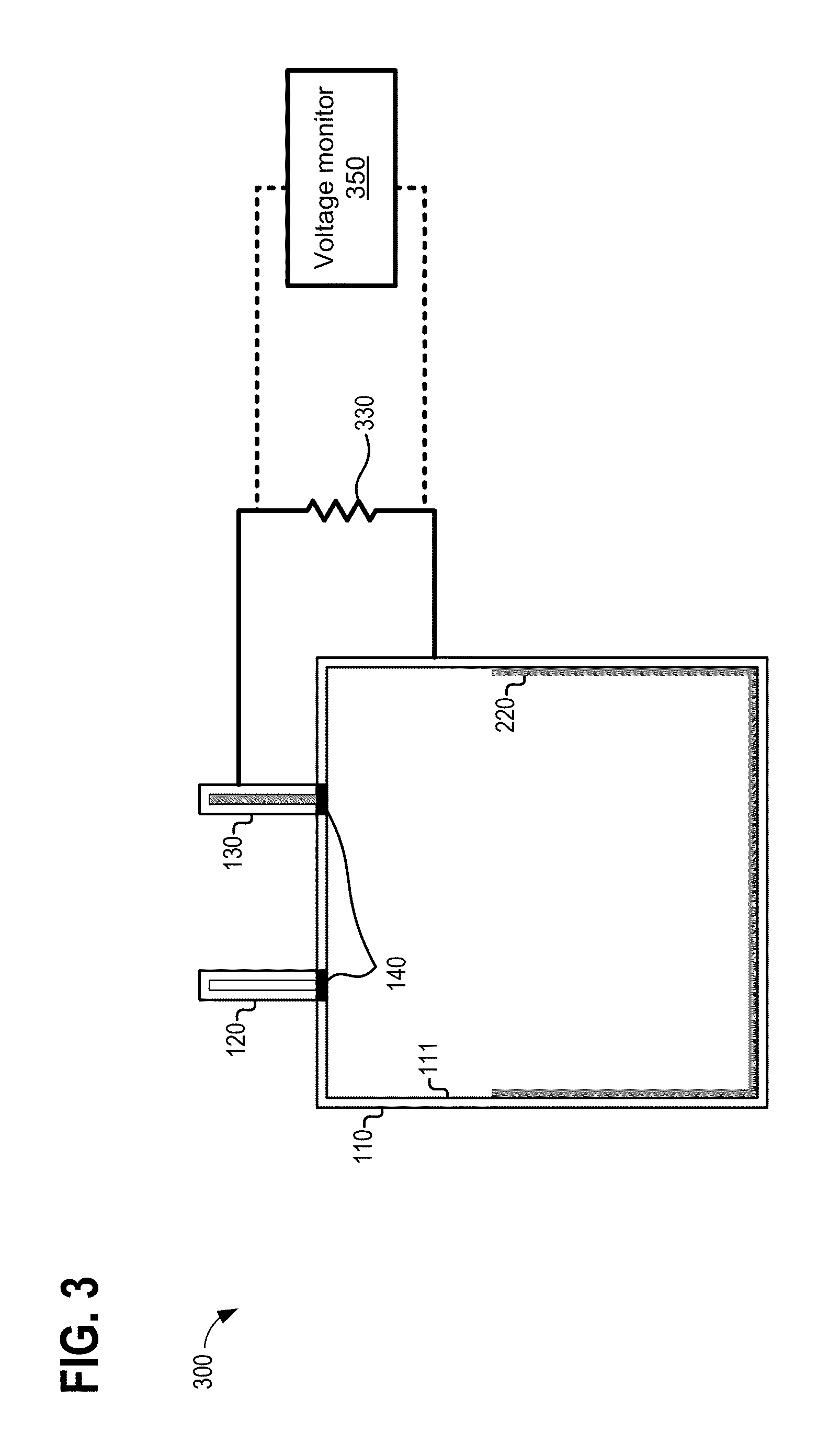Lithium battery with reference electrode
a lithium ion battery and reference electrode technology, applied in the direction of cell components, primary cell maintenance/servicing, sustainable manufacturing/processing, etc., can solve the problems of reducing the battery capacity for a given size, damage to battery components, etc., to achieve accurate assessment of battery state-of-health and/or battery-state-of-charge
- Summary
- Abstract
- Description
- Claims
- Application Information
AI Technical Summary
Benefits of technology
Problems solved by technology
Method used
Image
Examples
Embodiment Construction
[0019]The description relates to a method for manufacturing a reference electrode for a lithium ion battery, such as for a hybrid electric or electric vehicle. FIG. 1 shows an example of a two-electrode lithium ion battery with no reference electrode, and FIG. 2 schematically illustrates the lithium ion battery of FIG. 1 after forming the reference electrode. FIG. 3 illustrates an example apparatus for forming a reference electrode shown in FIG. 2. FIG. 4 shows a chart illustrating open circuit voltage stability of a neutral aluminum can reference electrode, and FIG. 5 shows the open circuit voltage stability of the reference electrode embodiment shown in FIG. 2. FIGS. 6-8 illustrate polarization and stability test results for the reference electrode embodied in FIG. 2. FIG. 9 illustrates a flow chart for an example method for manufacturing the reference electrode embodied in FIG. 2, and FIG. 10 illustrates a vehicle propulsion system comprising a battery management system including...
PUM
| Property | Measurement | Unit |
|---|---|---|
| weight percent | aaaaa | aaaaa |
| open circuit voltage | aaaaa | aaaaa |
| voltage | aaaaa | aaaaa |
Abstract
Description
Claims
Application Information
 Login to View More
Login to View More - R&D
- Intellectual Property
- Life Sciences
- Materials
- Tech Scout
- Unparalleled Data Quality
- Higher Quality Content
- 60% Fewer Hallucinations
Browse by: Latest US Patents, China's latest patents, Technical Efficacy Thesaurus, Application Domain, Technology Topic, Popular Technical Reports.
© 2025 PatSnap. All rights reserved.Legal|Privacy policy|Modern Slavery Act Transparency Statement|Sitemap|About US| Contact US: help@patsnap.com



